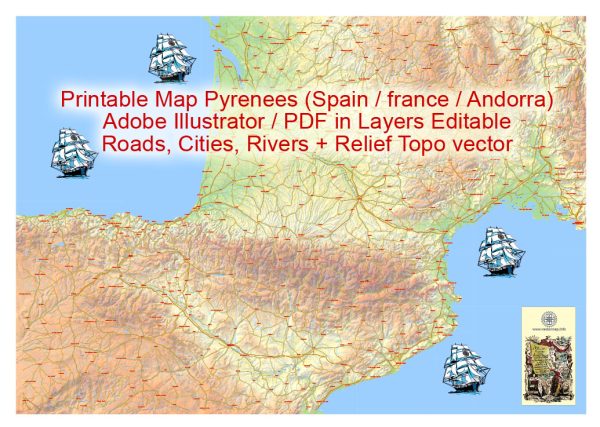The Pyrenees, a mountain range in southwest Europe that forms a natural border between Spain and France, has a rich history of human settlement and urban development. While the region is known for its stunning natural beauty and rugged terrain, various communities have thrived in the valleys and foothills of the Pyrenees over the centuries. Here’s a general overview of the history of urban development in the Pyrenees:
- Ancient Settlements:
- The Pyrenees have been inhabited since ancient times, with evidence of human presence dating back to the Paleolithic era. Early settlements were likely small, scattered communities engaged in agriculture, hunting, and herding.
- During the Roman period, the Pyrenees became a significant frontier region, and Roman towns and roads were established to facilitate control and trade. Roman influence left a lasting impact on the urban landscape.
- Medieval Towns:
- The medieval period saw the development of fortified towns and castles in strategic locations along the Pyrenean passes. These settlements often served as defensive strongholds and trade centers.
- The influence of feudalism shaped the urban structure, with castles dominating the higher elevations and towns developing in the valleys. Some notable examples include Foix in France and Jaca in Spain.
- Religious Centers:
- Monasteries and religious institutions played a crucial role in the development of the Pyrenees. Many monastic communities were established in remote areas, contributing to the economic and cultural life of the region.
- Some monasteries, such as the Abbey of Saint-Martin-du-Canigou in France, became centers of learning and pilgrimage, attracting people from across the region.
- Rural Life and Mountain Villages:
- The rugged terrain of the Pyrenees often led to the development of isolated mountain villages. These communities were characterized by traditional architecture adapted to the local climate and resources.
- Agriculture, animal husbandry, and forestry were essential to the economy of these villages, and many retained a strong connection to their cultural and historical roots.
- Modernization and Tourism:
- In the 19th and 20th centuries, the Pyrenees experienced changes associated with industrialization and modernization. Transportation infrastructure, such as roads and railways, improved connectivity between the mountainous regions and the surrounding lowlands.
- The Pyrenees also became a popular destination for tourism, attracting visitors with its scenic landscapes, outdoor activities, and cultural heritage. Ski resorts and recreational facilities emerged in response to the growing interest in mountain tourism.
- Contemporary Challenges:
- In recent times, challenges such as depopulation of rural areas and environmental concerns have influenced urban development in the Pyrenees. Efforts to balance economic development with conservation have become important considerations for local communities.
Overall, the history of urban development in the Pyrenees reflects the interplay between natural factors, cultural influences, and economic activities, creating a diverse and dynamic landscape in this mountainous region.


 Author: Kirill Shrayber, Ph.D.
Author: Kirill Shrayber, Ph.D.